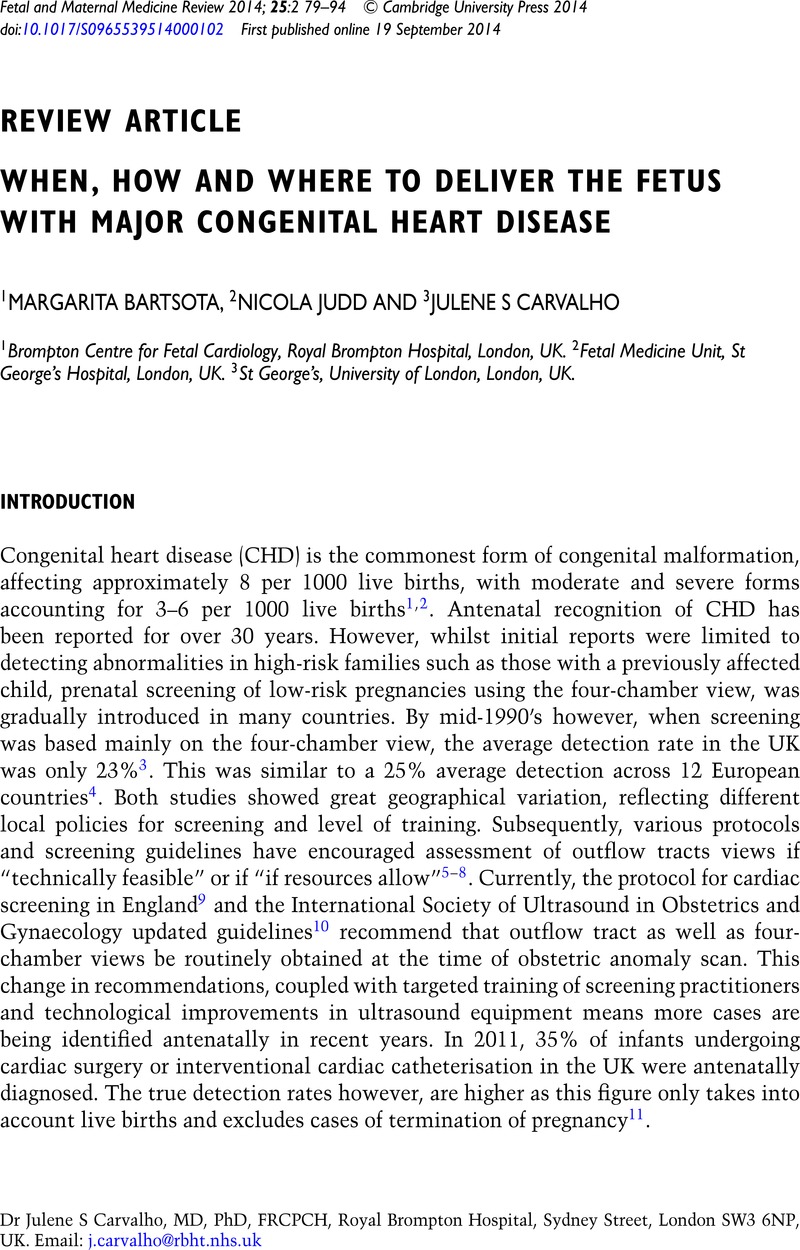Crossref Citations
This article has been cited by the following publications. This list is generated based on data provided by Crossref.
Carvalho, Julene S
2016.
Antenatal diagnosis of critical congenital heart disease. Optimal place of delivery is where appropriate care can be delivered.
Archives of Disease in Childhood,
Vol. 101,
Issue. 6,
p.
505.
Carvalho, Julene S.
and
Api, Olus
2017.
Pregnancy and Congenital Heart Disease.
p.
3.
Joye, S.
Sekarski, N.
Mivelaz, Y.
Boithias, Claire
Tolsa, Jean-François
and
Chabernaud, Jean-Louis
2018.
Cardiopathies congénitales en salle de naissance.
Revue de Médecine Périnatale,
Vol. 10,
Issue. 1,
p.
24.





